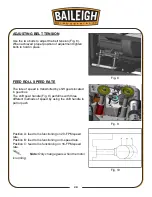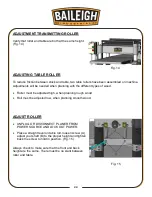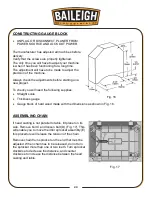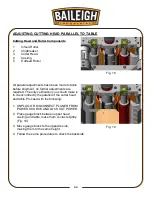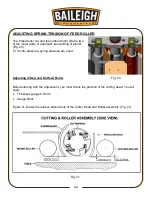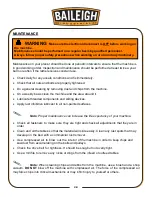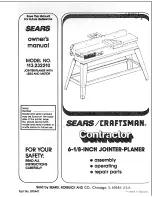
13
13
•
Maintain an adequate working area around the machine for safety.
•
Have the work area well illuminated with proper lighting.
•
Keep the floor free of oil and make sure it is not slippery.
•
Remove scrap and waste materials regularly, and make sure the work area is free from
obstructing objects.
•
It is important to maintain free area around the machine, which is required for the working
place. If any long material is machined, it is necessary to have a sufficient room in front of
the machine as well behind it in the places of material input and output.
•
FLOOR:
This machine distributes a large amount of weight over a small area. Make certain
that the floor is capable of supporting the weight of the machine, work stock, and the
operator. The floor should also be a level surface. If the unit wobbles or rocks once in place,
be sure to eliminate by using shims.
•
WORKING CLEARANCES:
Take into consideration the size of the material to be
processed. Make sure that you allow enough space for you to operate the machine freely.
•
POWER SUPPLY PLACEMENT:
The power supply should be located close enough to the
machine so that the power cord is not in an area where it would cause a tripping hazard. Be
sure to observe all electrical codes if installing new circuits and/or outlets.
•
LEVELING:
The machine should be sited on a level, concrete floor. The accuracy of any
machine depends on the precise placement of it to the mounting surface. Locate the planer
in an area that is level and provides a solid foundation. Make sure that any potential kickback
is not in line with aisles, doorways, wash stations or other work areas.
o
Place shims under the four feet mounted in
the base as required for leveling.
There are four lifting handles (A) hidden in the bed of
the planer table. Pull the handles out for use and push
them in when not in use.
WARNING:
Before operating; make sure it is positioned firmly on a solid
level floor. If it tips over on you, it could cause severe injury or death.
Fig. 1
Summary of Contents for IP-156
Page 20: ...18 18 ELECTRICAL DIAGRAM...
Page 33: ...31 31 PARTS DIAGRAM SHEET 1 To Parts Sheet 2...
Page 34: ...32 32 PARTS DIAGRAM SHEET 2 From Parts Sheet 1...
Page 35: ...33 33 PARTS DIAGRAM SHEET 3...
Page 36: ...34 34 PARTS DIAGRAM SHEET 4...
Page 43: ...41 41 NOTES...






















